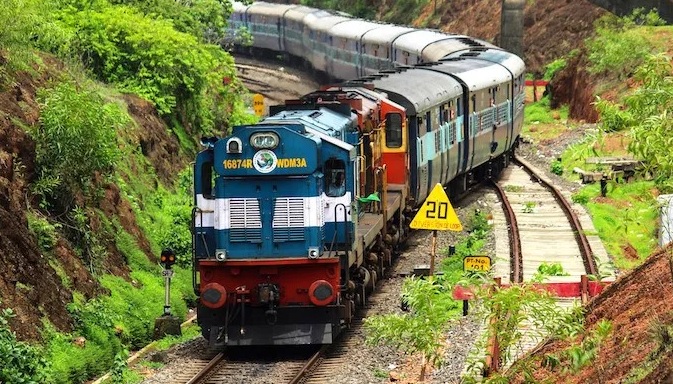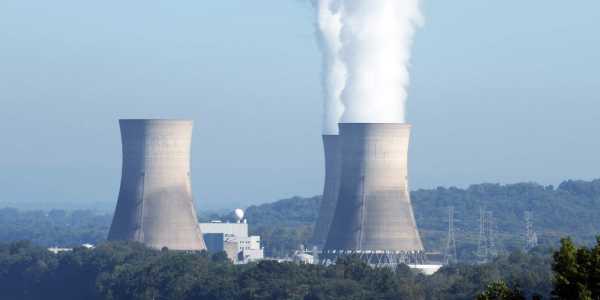Juhi Chaudhary: Called the lifeline of the country, Indian Railways, which is still a preferred mode of transport for the masses, has started greening its act. Of the 1GW renewables target by 2021 it announced in 2015, the railways has already installed about 37MW of wind and 16MW of solar across operations by the end of March. It is further increasing the share of renewables in its energy mix by contracting out 255MW of rooftop solar projects.

Indian Railways
Greening the railways can be a big step towards India fulfilling its solar target of 175 GW by 2022 and its commitment before the Paris Climate Agreement of 40% non-fossil fuel-based power capacity, says a new study by the Council on Energy, Environment and Water (CEEW).
The study, titled Decarbonizing the Indian Railways: Scaling Ambitions, Understanding Ground Realities, says that the railways could draw up to 25% of its electric power needs from renewables and achieve the target of 5 GW of solar by 2025. In order to achieve this, an investment of USD 3.6 billion would be needed, it says. About 1.1 GW would come from rooftop projects while 3.9GW would be from utility-scale projects, said the study that was released recently by railways minister Suresh Prabhu and energy minister Piyush Goyal.
Green engine of growth
“We want Indian Railways to become a green engine of growth. Decarbonisation is extremely important for railways. We have set up a target of electrifying the entire network of Indian Railways in next 10 years with at least 90% of track electrification in the next 5 years,” Prabhu said. “We have a plan to include renewables in a big way in railways’ energy mix and make it the cleanest mode of transport. We are looking to add 1,000 MW of solar and 200 MW of wind energy, out of which 36 MW has already been commissioned. Waste-to-energy, energy efficiency, energy audits and restoration of water bodies are areas in which we are looking to improve our resource efficiency.”
The railway minister said decreasing the carbon footprint of trains is not just good for the environment but good economics as well. Just by switching from diesel to electricity, a train like the Rajdhani Express can save up to INR 20 million a year. Indian Railways is currently the single-largest consumer of diesel in the country.
“The railways have come out with a commendable plan called Mission 41K where they are looking at a saving of INR 41,000 crore through the electrification of railway lines,” energy minister Goyal said. “The decision to domestically source equipment is another positive move from the railways and will largely benefit the domestic industry.”
Talking about large-scale installation of LED lights, Goyal added, “Energy efficiency has been one of the important programmes of the government and I am glad that Indian Railways have joined the energy efficiency programme and have tied up with EESL (Energy Efficiency Services Ltd) to have 100% LED lights. Today we are supplying power at reduced rate of 60-70% than what it was 3 years back even at peak demand.”
Rail travel has a lower carbon footprint than road travel anyway. Indian Railways has commissioned two freight corridors to boost its share in freight traffic from 36% to 45%. With solar prices falling, it makes more sense for the railways to switch to renewable energy.
“Indian Railways’ ambitious renewable energy push will not only lower energy bills for the railways but will also advance India’s climate goals and serve as a role model for low-carbon public transportation across the world,” said Arunabha Ghosh, CEO of CEEW. “The Railway Board needs to pursue stronger collaboration with state governments and electricity regulators to establish a robust ecosystem for ensuring developer and investor confidence in its renewable projects.”
However, there are certain key policy and regulatory challenges that developers face while supporting the railways’ renewable energy push. They include restrictions around the net metering policy in various states, improving cost viability by bringing down the cost of connection from the solar plant to the transmission utilities, providing banking facility for use of renewable power at night and facilitation of open access in states.
One potential challenges in developing solar power is availability of land. Asked about it, Goyal said, “So much of land that belongs to Indian railways has been encroached upon. If we bring solar panels on these spaces, the problem can be solved.”
A previous assessment by CEEW suggested that apart from 1GW potential of solar rooftops, another 1.2GW potential exists if 5% of the vacant land available with the railways were to be used for utility-scale solar parks. In the study, 12 states have been identified across India, based on railway operations and land availability, where rooftop and utility-scale projects could be taken up to meet the 5GW target for solar.
The study ranks these 12 states in terms of the ease of doing business for developers and finds that Madhya Pradesh ranks the highest for utility-scale projects, while Karnataka ranks highest in rooftop projects.
Total Views: 3,25,805





